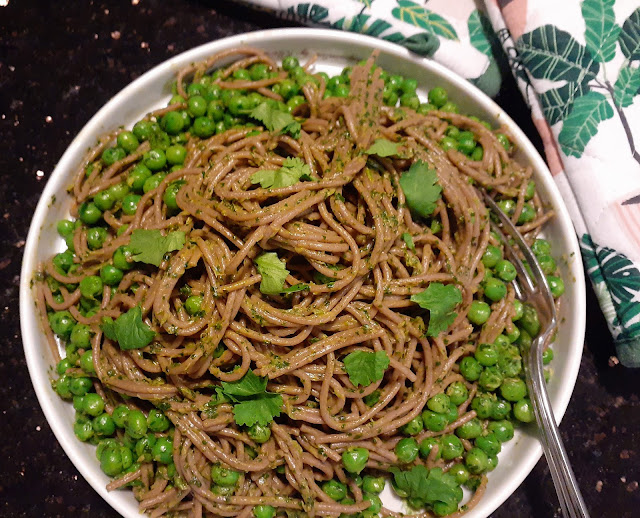The unique umami of edible mushrooms combined with fresh herbs, garlic and balsamic vinegar shines through in this recipe in both taste and nutritional benefits. Essentially it is a simple dish to make but every element within brings wonderful savoury richness to the plate. This recipe evolved after I had baked two loaves of rye sourdough bread in the morning. I felt like celebrating the success of the bread with a tasty lunch to compliment toasted sourdough.
PASSIONATE ABOUT DELICIOUS HOME COOKING AND SIMPLE LIVING IN THE QUEENSLAND TROPICS
Thursday, March 30, 2023
Herbed Mushrooms on Home Baked Toasted Sourdough
The unique umami of edible mushrooms combined with fresh herbs, garlic and balsamic vinegar shines through in this recipe in both taste and nutritional benefits. Essentially it is a simple dish to make but every element within brings wonderful savoury richness to the plate. This recipe evolved after I had baked two loaves of rye sourdough bread in the morning. I felt like celebrating the success of the bread with a tasty lunch to compliment toasted sourdough.
Saturday, March 25, 2023
Salmon Rissoles with a delicious Herb and Spiced Yoghurt Dressing
Call them Salmon rissoles, fish cakes, fish rissoles, or salmon cakes, they've been called all of these names over the years, because this is a retro recipe which I've been eating as long as I can remember. I've revamped these with a few optional ingredients, but the basic combination of mashed potato, beaten egg, flour, breadcrumbs and tinned red salmon remains the same.
Monday, March 20, 2023
Chocolate Fudge Cake with Coffee Buttercream
%206.jpg) |
| Chocolate Fudge Cake with Coffee Buttercream |
I'm in "Chocolate Heaven" with this cake. I might have mentioned previously that I've been working through chocolate cake recipes in my quest to find what I think is the perfect chocolate cake for all occasions, my go-to no fuss chocolate fudge cake, my signature cake. This is it for now, my perfect chocolate cake. MasterChef Winner Emelia Jackson says that this cake will always produce the same amazing result, whether it be for a birthday party, or a casual get together with friends where dessert is required, just decorate it accordingly. Dress it up with a heavenly ganache or go simple with a dusting of cocoa or icing sugar, and a serving of cream. Bake it into cupcakes, use it in a trifle, loaf cakes, there is no limit to how you can bake it or use it. Instant coffee is the secret weapon in this cake, it enhances the flavour of the chocolate without adding its own coffee flavour. I also like that there's no melted dark or milk chocolate in this cake batter, just rich, dark Dutch cocoa.
I have been debating whether or not to post this recipe just yet as there is another buttercream that I would like to fill and cover this cake with, and hopefully that is coming when the weather continues to cool down. I'll let you know when that happens, because Emelia's Malted Buttercream that I'm talking about looks like a real showstopper for a special occasion. This cake recipe is extracted from "First Cream the Butter and Sugar", by Emilia Jackson, and I can't wait to try some more of her recipes, because I love this cake. Needless to say, I couldn't wait and had to share the recipe with you.
 |
| Mahjong table setup in the air-conditioning and waiting for my Mahjong friends to arrive. |
I chose to make Nigella Lawson's Coffee Buttercream this time because I love it, and I've made it before with a different chocolate cake recipe. I was in a bit of a rush because I'd made this cake for the Mahjong afternoon tea at home, it comes around quickly, and I wanted a buttercream that I could depend on when made in advance. Even though the air-conditioning was on at home the day I iced this cake, there were a lot of other things going on around me. Aren't there always though?
Ingredients:
Makes a 20 cm two tier cake
380 g light brown sugar
250 g cake flour (store bought or see tip below for making your own)
100 dark Dutch cocoa powder (I used Plaistowe premium Dutch processed from Woolworths)
1 1/2 teaspoons baking powder
1 teaspoon bicarbonate of soda
1 teaspoon fine salt
2 teaspoons instant coffee powder
200 ml boiling water
100 ml neutral-flavoured oil, such as vegetable or canola
200 g sour cream
4 eggs
chocolate shavings to garnish (optional)
Method:
Preheat the oven to 160 deg. C (140 deg. C fan forced)
Line two 20 cm round cake tins with baking paper
Whisk the brown sugar, flour, cocoa, baking powder, bicarbonate of soda and salt to ensure that there are no lumps. (No need to sift)
Dissolve the coffee in the boiling water in a largish jug, then add the oil, sour cream and eggs and whisk until thoroughly combined. Make a well in the centre of the dry ingredients and pour in the egg mixture. Fold until just combined. We want a lovely tender cake, with a good crumb, overmixing will prevent this from happening.
Split the batter between the cake tins and bake for 50 minutes. This was perfect for my oven but test it with a skewer inserted into the center of the cake. If it comes out clean, the cake is cooked.
Leave the cakes to cool for 15 minutes before turning them out onto a wire rack to cool completely.
Pauline's baking notes:
Adding coffee to the cake batter enhances the flavour of the chocolate. You can't taste the coffee.
What I also love about this cake is that it doesn't sink in the middle as some do.
Cake flour: After making this cake, I am really on board with using cake flour, for a superior and tender cake crumb. Cake flour is a low protein flour that creates a very tender fluffy and light cake. You can make your own. Just measure out 430 g plain flour, then add 70 g corn flour and sift together. By adding the corn flour, the gluten content in the plain flour is reduced from 11 per cent to between 7 and 9 per cent. (Emelia Jackson). I've started making it in a large batch so I am always prepared for a cake making session.
For medical reasons the only nuts I eat now are walnuts as they are the softest nut, so I didn't add any chopped nuts to the photo of the cake. However, it looks and tastes lovely with chopped pistachios on top of the buttercream.
350g icing sugar.
175g soft Unsalted Butter. softened
Instant Espresso Coffee Powder, 2 1/2 teaspoons, dissolved in 1 x 15ml tablespoons just-boiled water
(All of my tablespoon measurements are 20ml and that is what I probably used in this recipe with no problems)
This icing is a cinch to make in a food processor. Because it is warmer and more humid where I live than where this recipe was probable tested, I thought I might have problems with the icing melting all over the cake, but it held its consistency beautifully.
- Pulse the icing sugar in your food processor a few times to remove any lumps but make sure the feeding funnel on the lid is covered so that icing dust doesn't fly everywhere:)
- Add the softened butter and blitz to mix, scraping down the bowl once or twice.
- With the motor running again, pour the coffee down the funnel of the processor and quickly blitz. Remove the blade carefully and scrape down the blade with a spatula.
- Place one of the cakes on a serving plate or stand, flat side up. It is probably better to place the highest cake as the base. Spread the lower layer generously with half the coffee butter cream, then make a sandwich with the second layer, with the top of the cake facing upwards.
- Pile the rest of the buttercream on top and use a wide icing knife or spatula to spread the icing, over the cake. Nigella uses the word "swirlingly" to describe this technique which I love.
 |
| This is a different chocolate cake recipe that I made a few years ago when I used the Coffee buttercream as well. |
Wednesday, March 15, 2023
Moroccan Baked Chicken with Fennel and Chickpeas, it's a delicious Traybake
You all know me, and by now you know that I love to prepare a delicious and simple chicken traybake for dinner. It takes a lot of the pressure off when you are entertaining friends, leaving you time to enjoy their company. I love my oven. Even more, I love a traybake that is loaded with flavour and is very easy to prepare. Moroccan food is packed with flavour from all those heady exotic spices, such as baharat, cumin, smoked paprika, turmeric and ginger. Fresh Fennel, a vegetable which originates from the Mediterranean region, brings its unique flavour to this dish, please don't skimp on it.
Thursday, March 9, 2023
Creamy French Chicken Tarragon (Poulet a l'Estragon)
Monday, March 6, 2023
Pickled Beetroot
The secret ingredient which sets this Beetroot Pickle recipe apart in flavor and intensity is the cinnamon stick. All the flavors will develop in the jars over the next couple of weeks resulting in a very aromatic and tasty beetroot pickle. I pickled 4 large beetroot and finished up with two large jars of Pickled Beetroot.
Thursday, March 2, 2023
In My Kitchen, March 2023
February has always had a special zing to it for me because it's my birthday month. I mightn't feel a day over 25, but I hope that I am a lot wiser than I was back then. My friends really spoiled me this year with beautiful birthday cakes. Jennifer arrived for dinner one night just before my birthday when husband P was away, with a dozen beautiful Butterfly Cakes which she had made that day, which are nostalgically reminiscent to me of school fetes, church fetes, and splendid old fashioned afternoon teas. I was so appreciative as there is quite a lot of fiddly work involved with these. Each cake either had homemade strawberry jam or lemon curd dolloped into the middle under the cream. I froze a few of them, and they kept beautifully in the freezer. We've eaten them all now. Gosh they were so good. I'll bake some one day and share the recipe with you. Thanks so much Jen, you are a very thoughtful friend.
 |
| Corella pears were perfect in the cake |

 |
| A fun tea towel gift from special friends. They know me well. |
 |
| Freshly washed coriander for the pasta. |
 |
Savoury Yeast flakes replaced cheese in the Sorghum Spaghetti recipe which was interesting. I've never used it before. Now I need to find a way to use the rest of it.
.jpg)

%205.jpg)
%203.jpg)
%202.jpg)
%204.jpg)
.jpg)
















